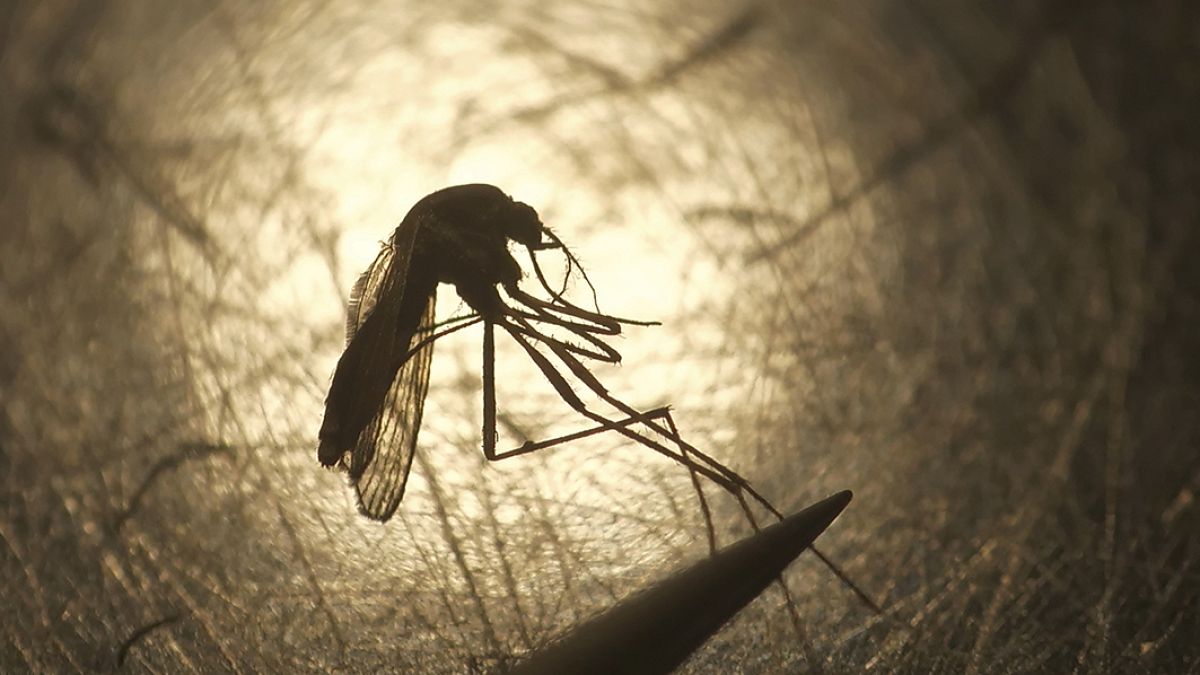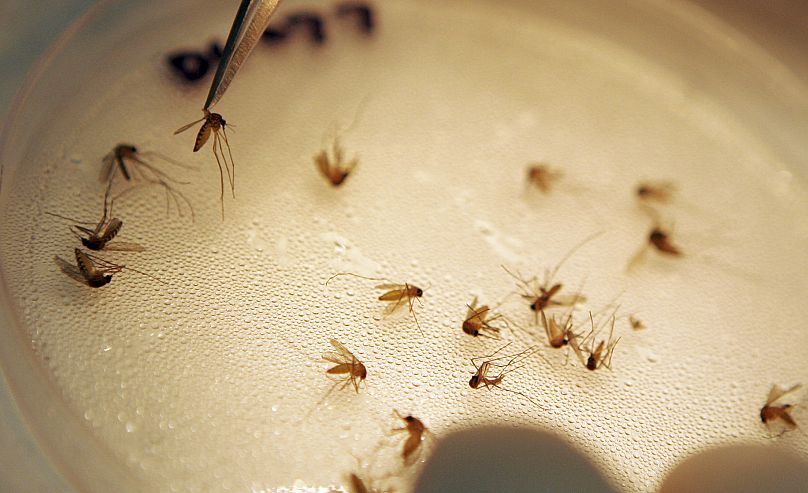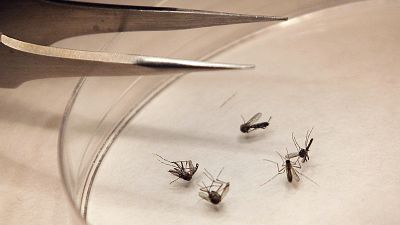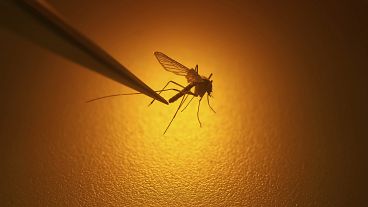Some 144 cases have been reported in Italy since the beginning of the year, 50 of which in the last week alone. There have been 10 deaths so far.
Mosquitoes are known to be the bane of the Italian summertime as the hottest and most humid months of the year lead to an abundance of the nuisance insects at all times of the day.
But Italians are less prepared to face the threat of mosquitoes potentially carrying the West Nile virus (WNV), a disease indigenous to Africa, the Middle East, Asia and Australia which has recently made a move to Europe and North America.
This summer in particular has seen a dramatic rise in cases, prompting concern among health authorities in Italy.
In the last week alone, 50 more cases of West Nile fever have been reported in Italy, where infections of the virus have been soaring this summer.
With the latest infections, the total number of cases reported in the northern regions of Veneto, Piemonte, Lombardia and Emilia-Romagna is now up to 144, according to newly-released data from Italy's public health body the Istituto superiore di sanità (ISS).
Three more patients have also died in the last seven days, bringing the virus's total death toll up to 10.
Here’s what we know.
How common is West Nile virus in Europe?
Since 1999, the virus, which causes the so-called West Nile fever, has travelled far from areas where it has been traditionally prevalent.
It’s now found in every continent on the planet except Antarctica, and in the US is the leading cause of mosquito-borne diseases.
In Europe, it is still relatively rare; according to the latest European Centre for Disease Prevention and Control (ECDC) published on August 3, some 120 cases of WNV had been reported in Europe this year.
But the data reveals an alarming fact: of those 120 cases, 94 were reported in Italy alone. That’s more than three times the cases reported in Greece (23), the country with the next highest number of cases among the four in Europe that have reported the virus in their territory.
The other countries, Serbia, Slovakia and Romania, reported 23, 1 and 2 cases respectively.
Of greater concern is that, of those who contracted the virus and developed West Nile fever, 10 people in Europe had died of the disease as of August 11, all in Italy.
Since the beginning of the year, Italy reported outbreaks of the virus among equids (horses and others) and birds.
How big is this year's West Nile virus outbreak?
In the last week, the number of infections reported in Italy has soared to 144 as of August 11, with 50 new cases recorded in one week alone.
The total death toll of the virus grew grown from five to seven in the week between August 1 and August 7, with five deaths in the Veneto region, one in Emilia-Romagna and one in Piemonte.
In the last week, the death toll has grown again to a total of 10 victims.
Cases in Italy have been largely concentrated in the north, with the city of Padova in Veneto being considered the hotspot of the virus in the country.
The geographic spread of the outbreak is perhaps surprising considering southern Italy is hotter and more humid than the north, offering what is considered to be a better habitat to the virus-carrying mosquitoes. But the lowlands of Veneto, with their natural habitat, are actually the perfect breeding ground for mosquitoes; entomologists this year found that the number of mosquitoes in the area had increased by 27 per cent, as reported by Italian newspaper Corriere.
What are the symptoms of West Nile virus?
Most people actually do not develop symptoms at all, while those who do display symptoms start showing them two to 14 days after being bitten.
Symptoms of WNV infection normally manifest themselves in the form of fever accompanied by flu-like symptoms such as headaches, body aches and diarrhoea.
In rare cases, the virus can cause an infection of the brain and its lining (encephalitis or meningitis) which can be fatal.
Not all mosquitoes are known to carry the West Nile virus. Scientists have specifically identified the Culex species as the ones responsible for spreading the virus.
But what potentially sounds like very helpful information is less than useful considering that there’s no standout characteristic trait to distinguish the species, considered to be the "average Joe" of mosquitoes.
Culex mosquitoes are 4-10 mm, brownish in colour, and with no specific pattern on their body. They differ from other European mosquitoes because of their proboscis (their little biting "mouth"). Their legs also lack the same pale and dark ring patterns, and their abdomen remains rounded instead of flat.
It’s unlikely that you would have the chance to observe a mosquito for long enough to identify it, and if you do, it’s possible it has already sucked your blood.
If a mosquito has been infected with WNV, the virus will be transmitted through its bite.
Why are West Nile virus cases increasing?
Cases of WNV are not new to Italy, but there have never been so many reported in one summer alone.
Though experts haven’t yet identified why cases are booming now, recent studies suggest a link between higher temperatures caused by global warming and the explosion of mosquito-led infections.
Experts had already warned a couple of years ago that climate change could lead to an increase in the number of disease-carrying mosquitoes.
A 2020 study by Imperial College London and Tel Aviv University found that by 2030 higher temperatures might establish the presence of dengue, yellow fever and zika-carrying mosquitoes in Europe.
The experts behind the study found that disease-carrying mosquitoes have already benefitted from recent climate change around the world, and as this accelerates it’s likely that more will be introduced to Europe.
A previous study in 2019 had predicted that disease-carrying mosquitoes will reach 500 million more people around the world than they do now, as temperatures rise. Higher temperatures also mean that the breeding season for mosquitoes will get increasingly longer, also expanding the period of disease transmission.
What are Italian authorities doing about it?
There’s not much Italian authorities can do besides telling people to keep away from mosquitoes, as there’s no available vaccination against WNV.
Italy is recommending people wear long trousers and long sleeves when going outdoors at dawn and during sunset (despite the current high temperatures), keep mosquito nets on their windows, and make sure there's no water stagnating in flowers and plants pots, or dogs’ water bowls.
Other recommendations include cutting the grass to avoid mosquitoes proliferating and introducing fish in ponds and similar so that the insects can naturally be eliminated.
Is there travel advice in place for West Nile virus?
There are no travel notices in place warning about travel to Italy or other affected areas.
However, there are measures, in addition to advice from Italian health authorities that you should consider if travelling to an area experiencing cases.
According to the US' Centers for Disease Control and Prevention, it's advisable to stay in accommodation with air conditioning or those with a screen or mosquito net (particular one treated with a permethrin product).
Also use an insect repellant but check guidance before applying, particularly on children and pregnant people.
If using sunscreen, apply the repellant after the lotion.
Should you be worried?
Less than 1 per cent of people infected with WNV (1 in 150) actually go on to develop the most severe symptoms, and only 1 in 1,000 people infected will die of the virus.
Those who develop only mild symptoms, 20 per cent of the people infected, get over the virus in a matter of a few days or a few weeks at worst, like you would a normal fever.
Elderly people are more vulnerable to the virus than young people, with most victims in Italy being in their late 70s and 80s.
But in Italy, things might get worse before the end of summer. Virologist Giorgio Palù, President of the Italian Medicine Agency (Aifa), expects cases to continue rising until September, as reported by Italian newspaper Il Gazzettino.




